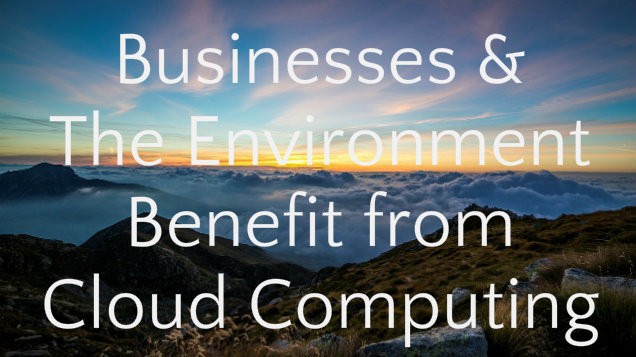There are many reasons why businesses use cloud computing. Cloud computing is very affordable because you don’t have to buy your own hardware infrastructure or hire staff for its operation and maintenance. Cloud computing allows for faster deployment of services because you don’t have to spend weeks or months acquiring and setting up the infrastructure. The reduced capital cost and manpower benefits of cloud computing means your resources can be focused on activities that more directly relate to your bottom line.
Cloud computing as mentioned here is defined as the use of remote server networks (or cloud servers) to store, manage, and process data. The use of these remote server networks are provided as a service from a company whose business is to operate and maintain this hardware. The more businesses that use this service, the more productively engaged the server network resource becomes.
Productive output from a few physical resources is generally better for the environment than the same productive output from many physical resources. If cloud computing weren’t available and every business had to use their own independent servers, then more servers would likely be required for the same productive output. This is because many of the independently owned servers would be under utilized. Using fewer servers for the same productive output consumes less energy than greater numbers of under utilized servers.
In addition to running the servers, energy is also required to cool them. Cloud service providers use large scale cooling facilities that consume less energy in total than the multiple small scale cooling facilities used by businesses for their own servers.
In short, when you aggregate the server needs of many companies into a few remote server networks, less energy is consumed and therefore the carbon footprint of business activity is reduced. Energy estimates made by researchers at Lawrence Berkeley National Laboratory show that large scale use of cloud computing by businesses can produce an enormous savings in energy.
The energy required to power and cool the world’s servers is an important issue because it is a sizeable figure. In 2010, servers were responsible for 1.1-1.5% of the world’s electrical energy consumption and 1.7-2.2% of energy consumption in the United States.
For more information on cloud computing and how your business can benefit from the use of cloud servers, contact us today.
Photo Source / Desaturated from original
